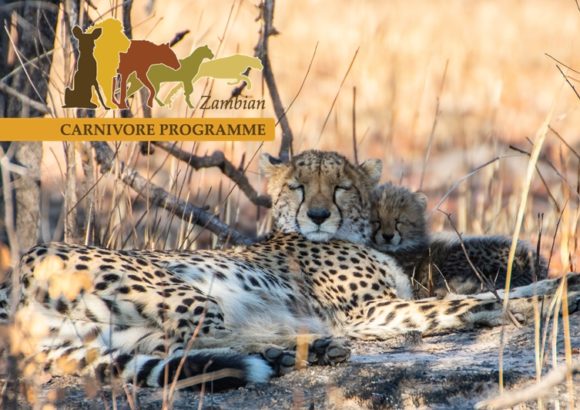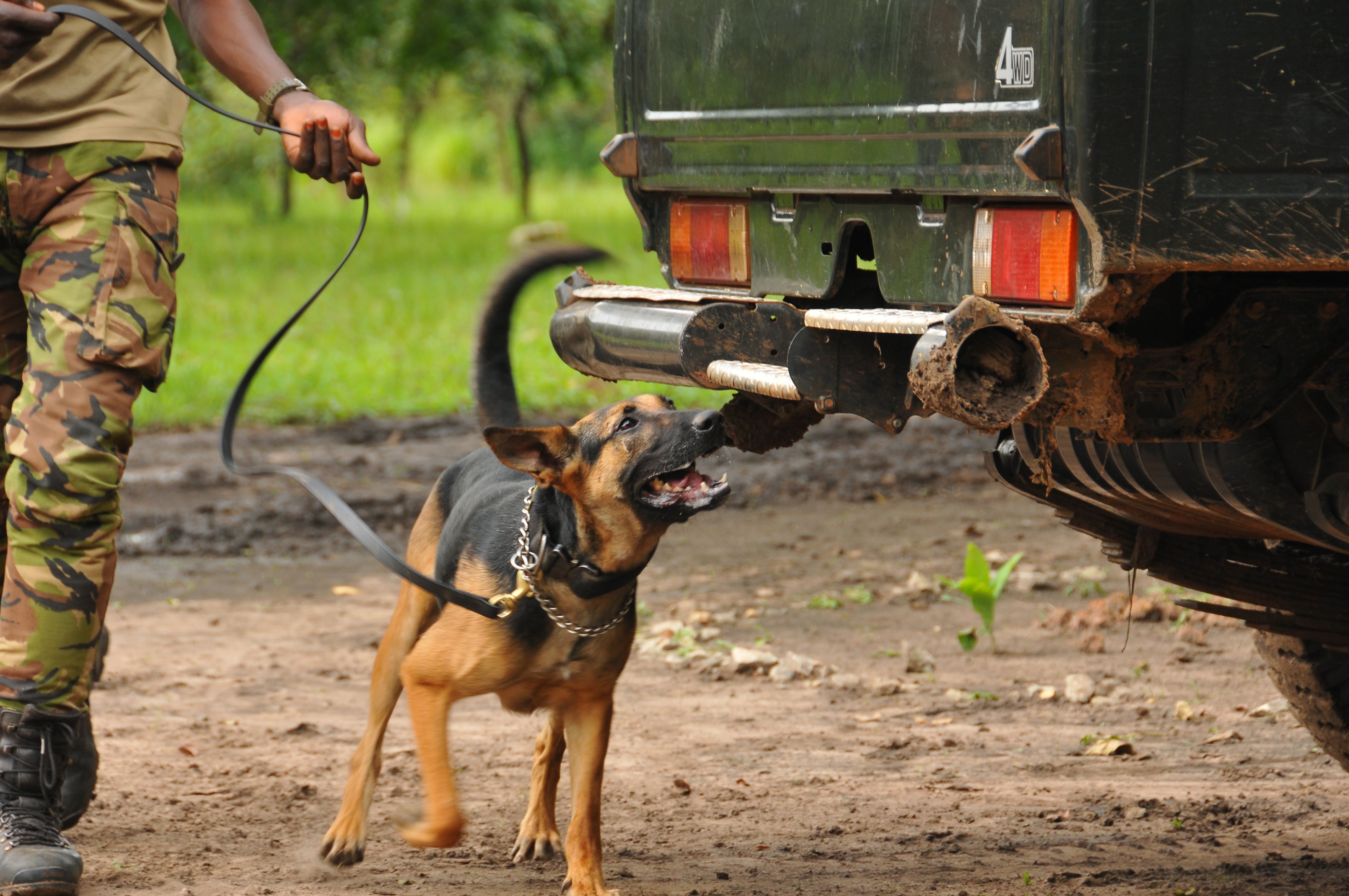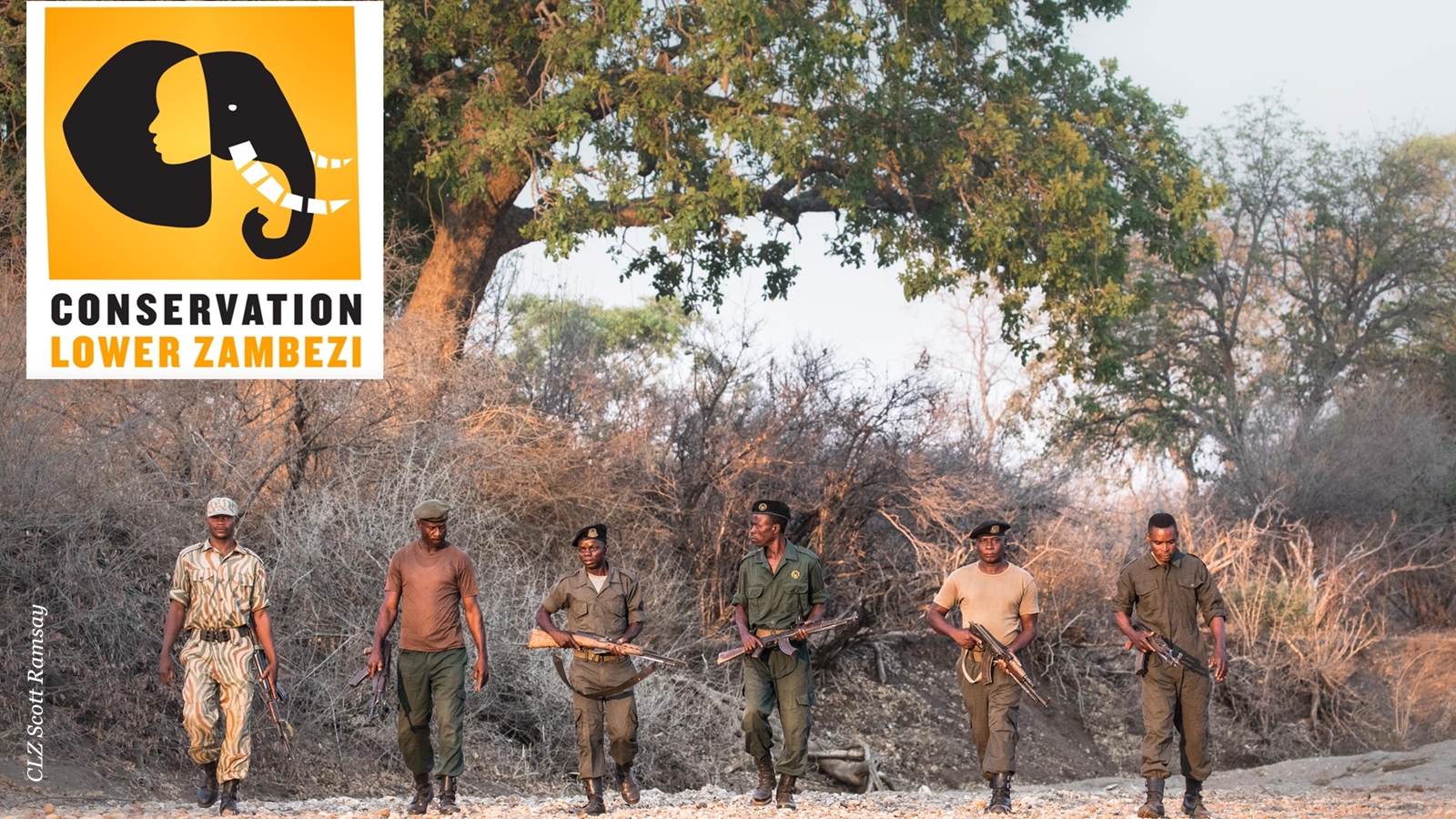Zambia
Zambia offers a quintessentially wild safari experience, attracting outdoor enthusiasts who value expert guiding and the exclusivity of small, often owner-operated camps. These intimate settings not only ensure a unique experience but also provide exceptional hospitality.
South Luangwa, the birthplace of the walking safari, teems with wildlife. The extensive Luangwa Valley, encompassing both North and South Luangwa, can easily fill an itinerary in combination with a stay in Livingstone, the gateway to the UNESCO World Heritage Victoria Falls. Here, the mighty Zambezi River plunges 100 metres into a narrow chasm, creating a spectacular mist that can be seen from miles away. Along the Zambezi’s banks, exquisite river lodges offer the perfect post safari retreat.
Further downstream, on the northern banks of the Zambezi, lies Lower Zambezi National Park. This area, a mosaic of waterways and floodplains, can be explored by foot, boat, or custom safari vehicle, offering close encounters with diverse wildlife.
Kafue National Park, one of Zambia’s oldest and largest parks, is renowned for its varied landscapes, from dense woodlands to expansive floodplains, and is home to an impressive array of wildlife including lions, leopards, and the rare African wild dog.
To the west, near the border with Angola, Liuwa Plain National Park offers a truly remote experience. Celebrated for its vast, untouched grasslands, spectacular wildebeest migrations, and strong conservation ethos driven by the local community, a visit to Liuwa is an exploration into one of Africa’s last great wildernesses.
An unforgettable wilderness adventure.
zambia JOURNEY INSPIRATION
Our travel network specialises in tailormade holidays. Below you’ll find some examples, with price guide, using destinations and camps/lodges which we think work well together. There are many combinations possible so this is just to give you some initial ideas.
When you are ready to explore options more fully, please do complete an enquiry form – we can then put you in touch directly with the relevant specialist partner team. In discussion with you, they will tailor an itinerary based around your interests and your budget.
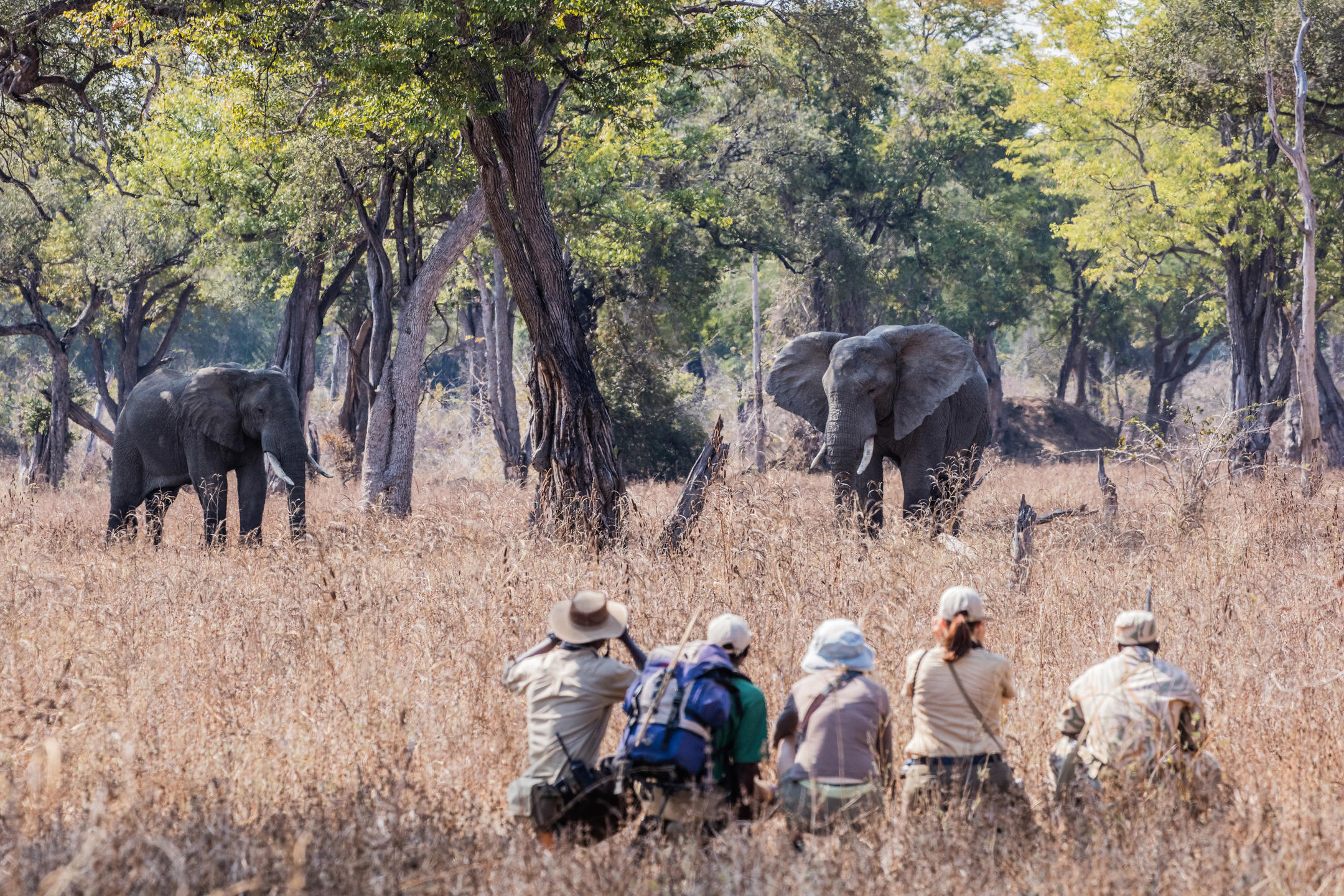 Explore South Luangwa National Park, nestled at the end of the Great Rift Valley, one of the world’s last pristine wildernesses. This wonderful journey offers stays in eco-friendly camps, with exploration of the Luangwa wilderness by both 4×4 vehicles and on foot.
Explore South Luangwa National Park, nestled at the end of the Great Rift Valley, one of the world’s last pristine wildernesses. This wonderful journey offers stays in eco-friendly camps, with exploration of the Luangwa wilderness by both 4×4 vehicles and on foot.
Begin your adventure at tiny Tafika, a charming, owner-operated camp with strong links to the local community. With over two decades of experience, John and Carol Coppinger have cultivated a warm camp atmosphere and are renowned for offering excellent guiding and delicious cuisine. Located on the banks of the Luangwa River just outside the national park, Tafika provides easy access to the wildlife-rich Nsefu sector, famed for its diverse fauna, particularly leopards.
Next, immerse yourself in a unique experience with the Chikoko Trails. Spend four nights deep in the Luangwa wilderness, staying at two distinct bush camps brimming with character and offering an intimate connection with nature.
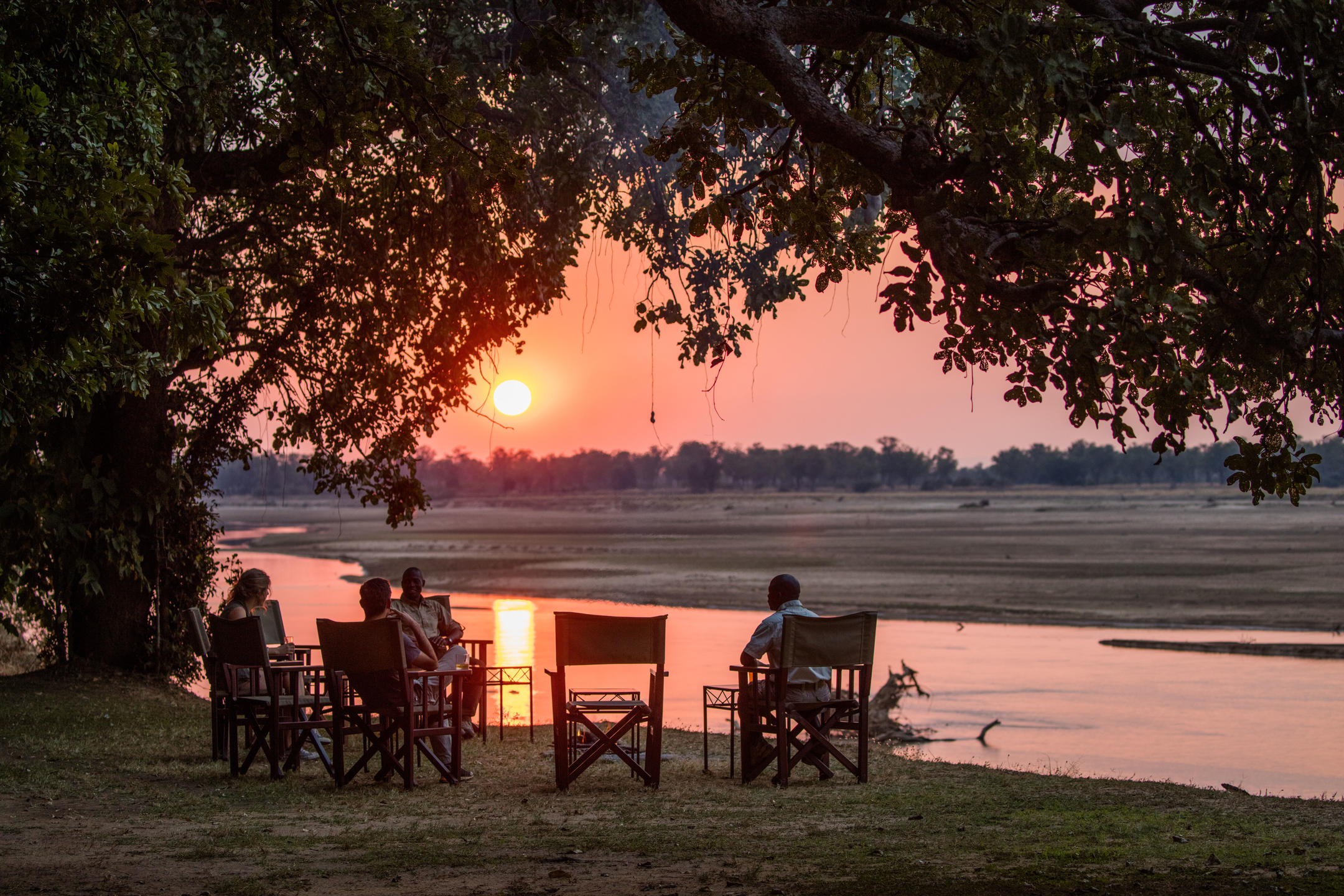 Days 1-3: Tafika Camp, South Luangwa
Days 1-3: Tafika Camp, South Luangwa
Upon arriving at the Mfuwe airstrip, you will be greeted and transferred to Tafika Camp, situated on the eastern bank of the Luangwa River, just north of Nsefu in South Luangwa, approximately a 2-hour drive away. Over the next three nights, immerse yourself in a variety of activities in this superb wild location. Enjoy expert-guided excursions and the exceptional hospitality of the dedicated Tafika team.
 Days 4-7: Chikoko Trails, South Luangwa
Days 4-7: Chikoko Trails, South Luangwa
Cross the river by canoe to embark on the Chikoko Trails, an adventurous walking route in the remote northern sector of South Luangwa. Over the next four nights, you will stay at two distinctive bush camps, Big Lagoon and Chikoko Tree, each offering a unique and immersive wilderness experience.
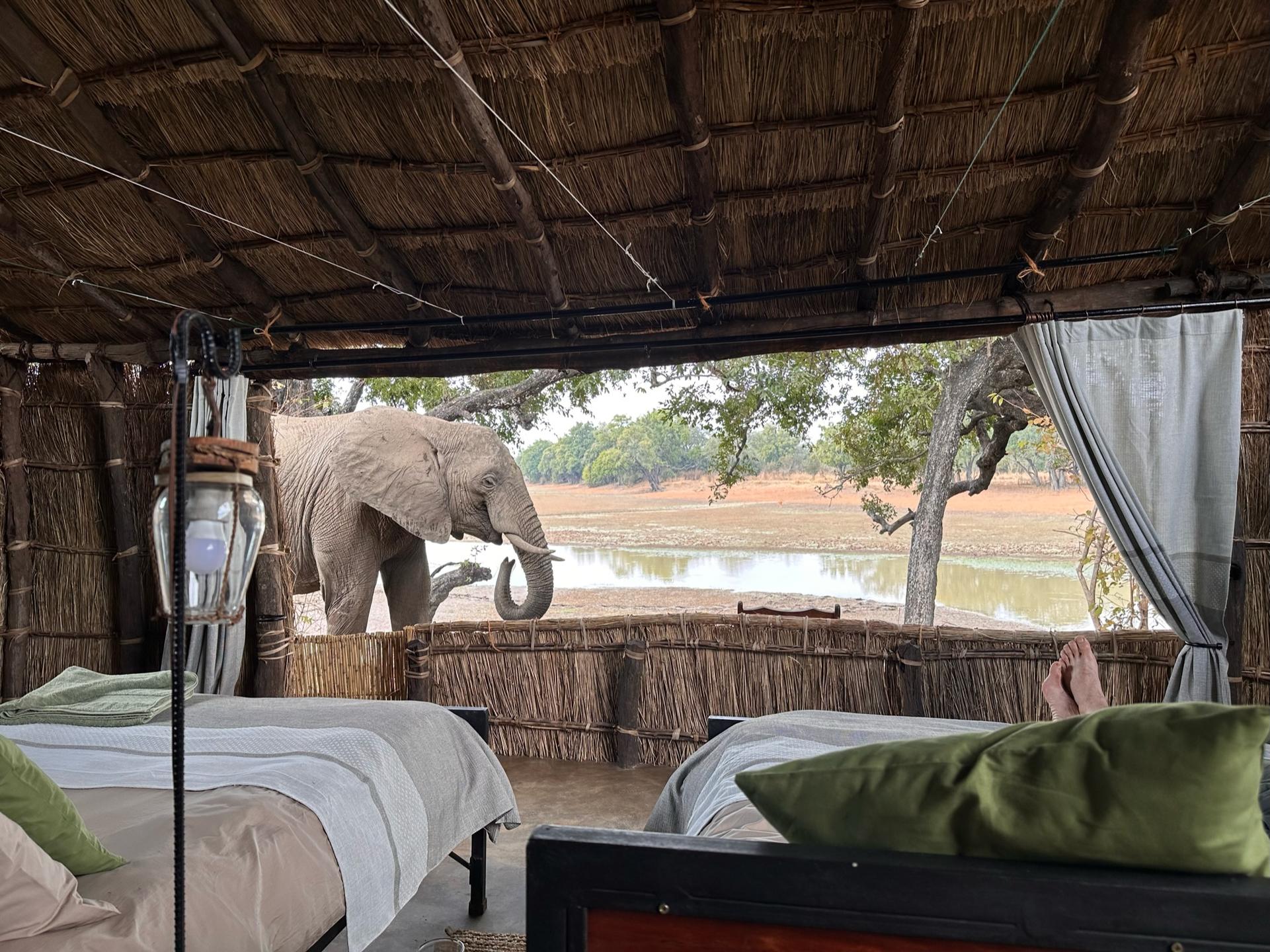 Day 8: End of Arrangements
Day 8: End of Arrangements
After breakfast, your adventure concludes as you depart from the bush and head back to the Mfuwe airstrip for your onward journey.
Price Guide
Per person sharing: from £4,685 (based on mid season)
- This itinerary is available May – October.
- This trip starts and ends in Lusaka.
Includes
- All transfers
- Park & conservancy fees
- All game activities
- Full board accommodation and house drinks (on safari)
International Flights Our partners can book international flights for you as required.
 For an authentic bush experience with minimal impact, exceptional guiding, and diverse activities in Zambia’s renowned safari regions, the Lower Zambezi and South Luangwa, this itinerary is an excellent choice.
For an authentic bush experience with minimal impact, exceptional guiding, and diverse activities in Zambia’s renowned safari regions, the Lower Zambezi and South Luangwa, this itinerary is an excellent choice.
Start your adventure at Kutali Camp, a small island fly-camp located in the eastern reaches of the Lower Zambezi. Then, spend five nights in South Luangwa at Mwamba Camp. Both camps are teeming with wildlife, placing you right in the heart of the action.
These rustic camps offer the perfect blend of authenticity and comfort, providing a genuine wilderness experience. Ideal for wildlife enthusiasts, photographers, walkers, and anyone seeking a back-to-nature adventure.
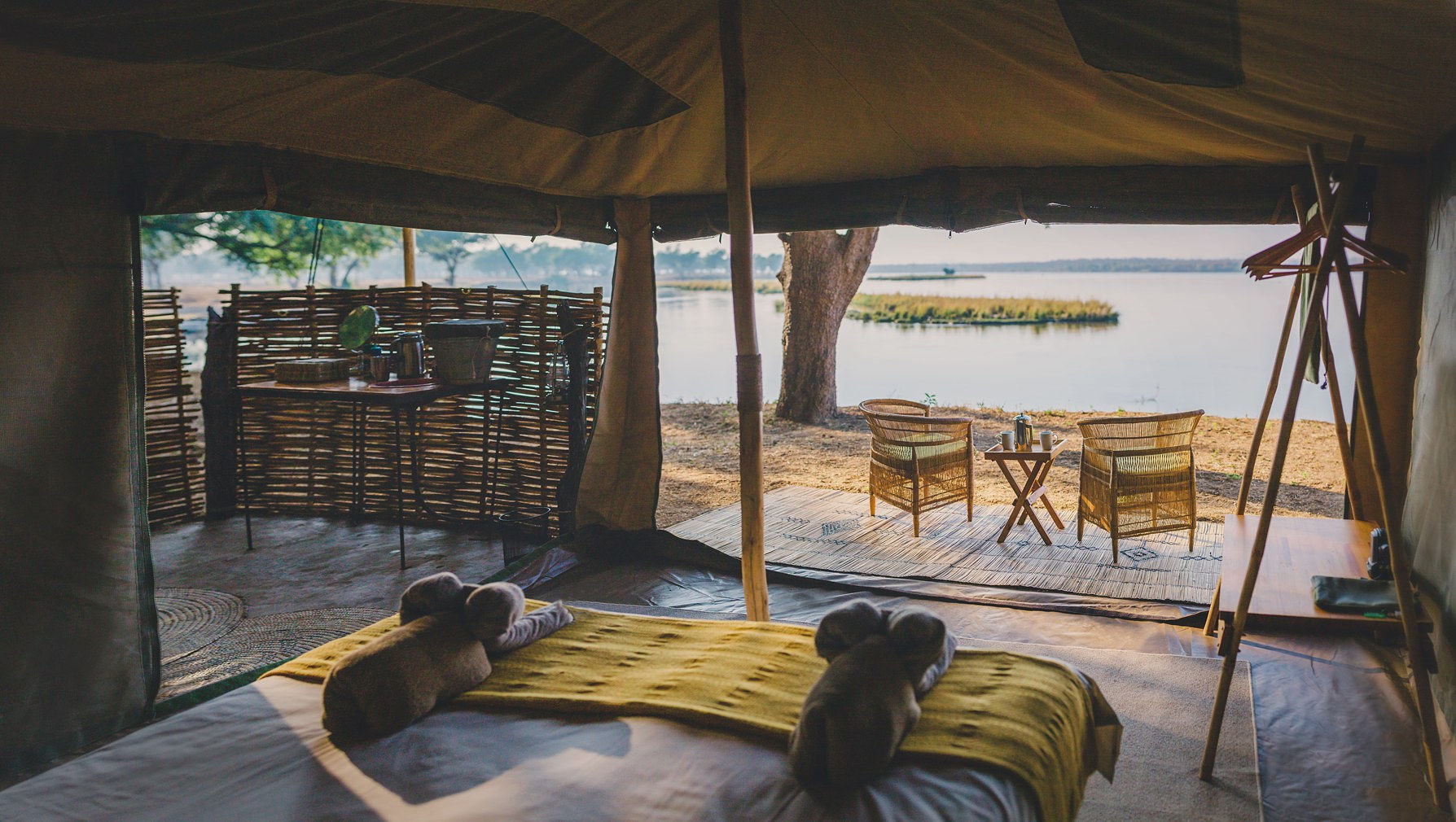 Days 1-3: Kutali Camp, Lower Zambezi National Park
Days 1-3: Kutali Camp, Lower Zambezi National Park
Fly to the Jeki airstrip in Lower Zambezi National Park, where you will be met and transferred to Kutali Camp on Kulefu Island, nestled amidst a winterthorn forest. Over the next few days, explore the remote and stunning eastern section of the Lower Zambezi on foot, by boat, canoe, and 4×4. In 2020, Explorers Against Extinction supported the vital work of Conservation Lower Zambezi, donating over $15,000 USD to help sustain the Community Scout Wildlife Patrols during the pandemic, ensuring the continued protection of the area’s wildlife.
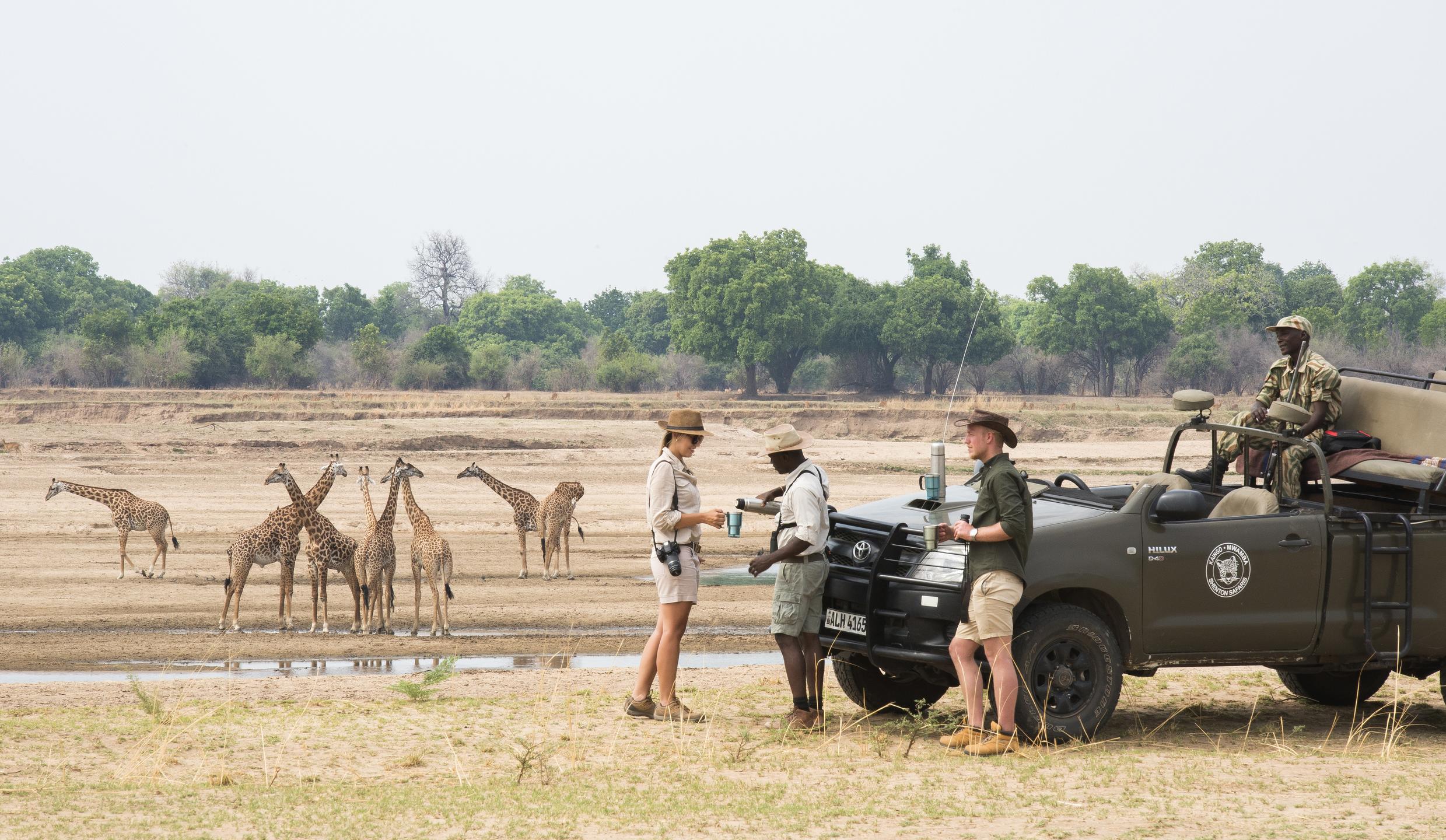 Days 4-8: Mwamba Camp, South Luangwa National Park
Days 4-8: Mwamba Camp, South Luangwa National Park
After an early morning activity and breakfast, fly to South Luangwa’s Mfuwe airstrip, where you will be met and transferred to Mwamba Bush Camp. This intimate camp features four chalets beautifully situated along the Mwamba River. The ‘last waterhole’ hide at the edge of the camp is exceptional for wildlife sightings and photography, especially during the late dry season (September/October). Explorers Against Extinction supports several initiatives in this area, including the Zambian Carnivore Programme and Conservation South Luangwa.
 Day 9: End of Arrangements
Day 9: End of Arrangements
Today, you will return to Mfuwe for your onward journey, marking the end of your incredible Zambian adventure.
PRICE GUIDE
Per person sharing: from £6,535 (based on mid season)
- This itinerary is available May – October.
- This trip starts and ends in Lusaka.
INCLUDES
- All domestic flights, airstrip transfers and departure taxes
- Park & conservancy fees
- All game activities
- Full board accommodation and house drinks
International Flights Our partners can book international flights for you as required.
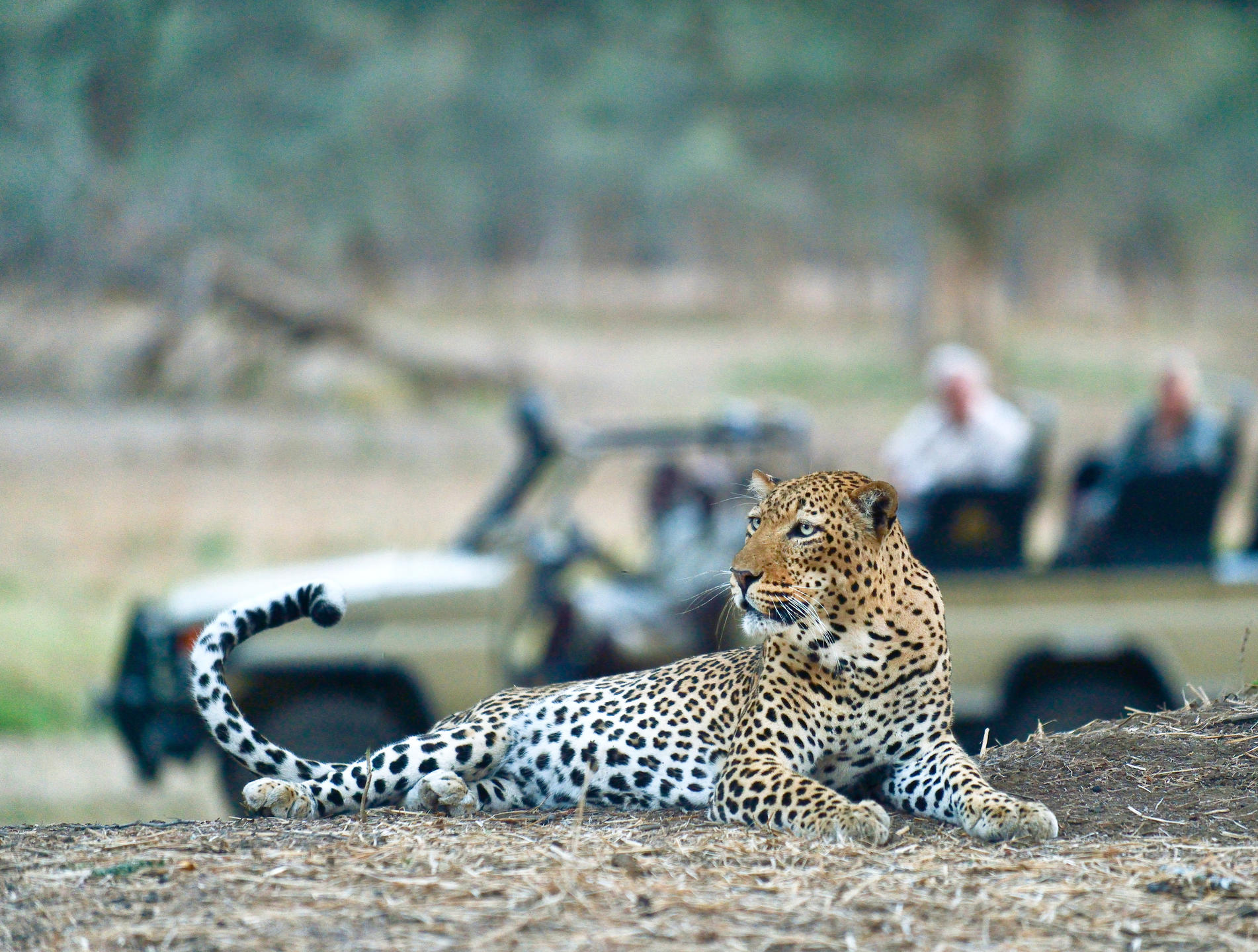 This exceptional safari takes you to Zambia’s premier wildlife regions, featuring hand-picked properties that are small, perfectly located, and dedicated to conservation.
This exceptional safari takes you to Zambia’s premier wildlife regions, featuring hand-picked properties that are small, perfectly located, and dedicated to conservation.
Old Mondoro is one of our favourite bush camps offering a genuine wilderness experience with a focus on simplicity and closeness to nature. The camp provides an intimate and characterful setting without the trappings of luxury. Excellent guiding and warm hospitality ensure a top notch experience.
Similarly, Kaingo in South Luangwa offers an enviable position and a strong emphasis on wildlife viewing. The camp is a photographer’s dream with access to a number of hides. This camp balances comfort and authenticity, making it ideal for nature enthusiasts.
 Days 1-3: Old Mondoro, Lower Zambezi National Park
Days 1-3: Old Mondoro, Lower Zambezi National Park
Fly to Lower Zambezi National Park, where you will be met and transferred to Old Mondoro Camp. This classic safari camp, with only five chalets, offers a secluded and authentic Zambian safari experience, far from any crowds. Old Mondoro Camp provides a “back to the bush” atmosphere, focusing on wildlife and the wilderness. During your stay, enjoy walking safaris, day and night game drives, canoeing, catch-and-release fishing, and boat safaris. The game in this area is exceptional, with resident lion prides, high leopard populations, and large families of elephants that frequently pass through the camp.
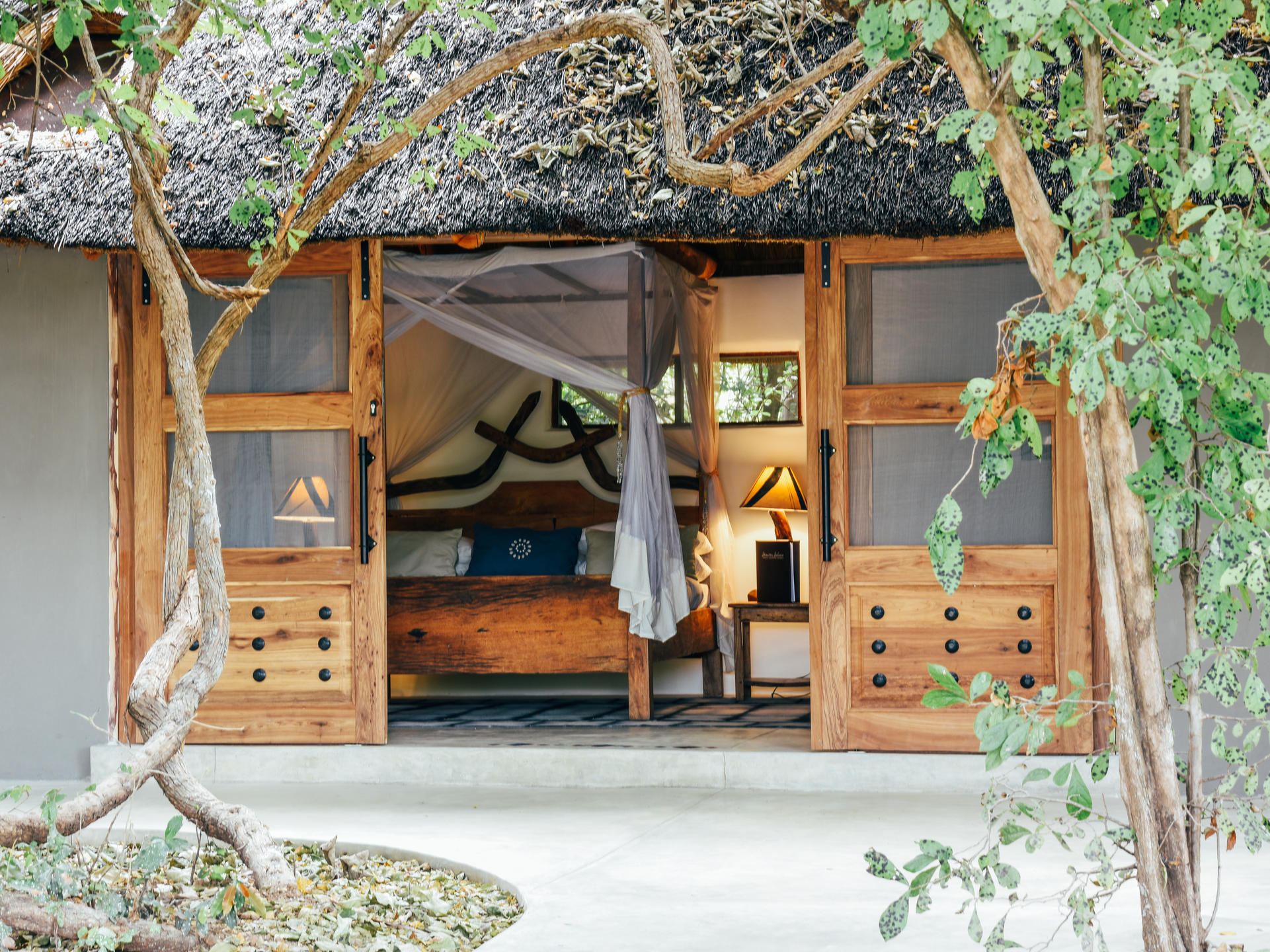 Days 4-7: Kaingo, South Luangwa National Park
Days 4-7: Kaingo, South Luangwa National Park
After breakfast, fly to South Luangwa, where you will be met and transferred to Kaingo camp. With its simple design, Kaingo makes you feel at home in the bush. Superbly positioned overlooking the Luangwa River, deep within the prime area of South Luangwa National Park, Kaingo offers an incredible opportunity to fully experience the Luangwa Valley. Enjoy exceptional wildlife viewing and photography, with access to various hides and the rich biodiversity of the area.
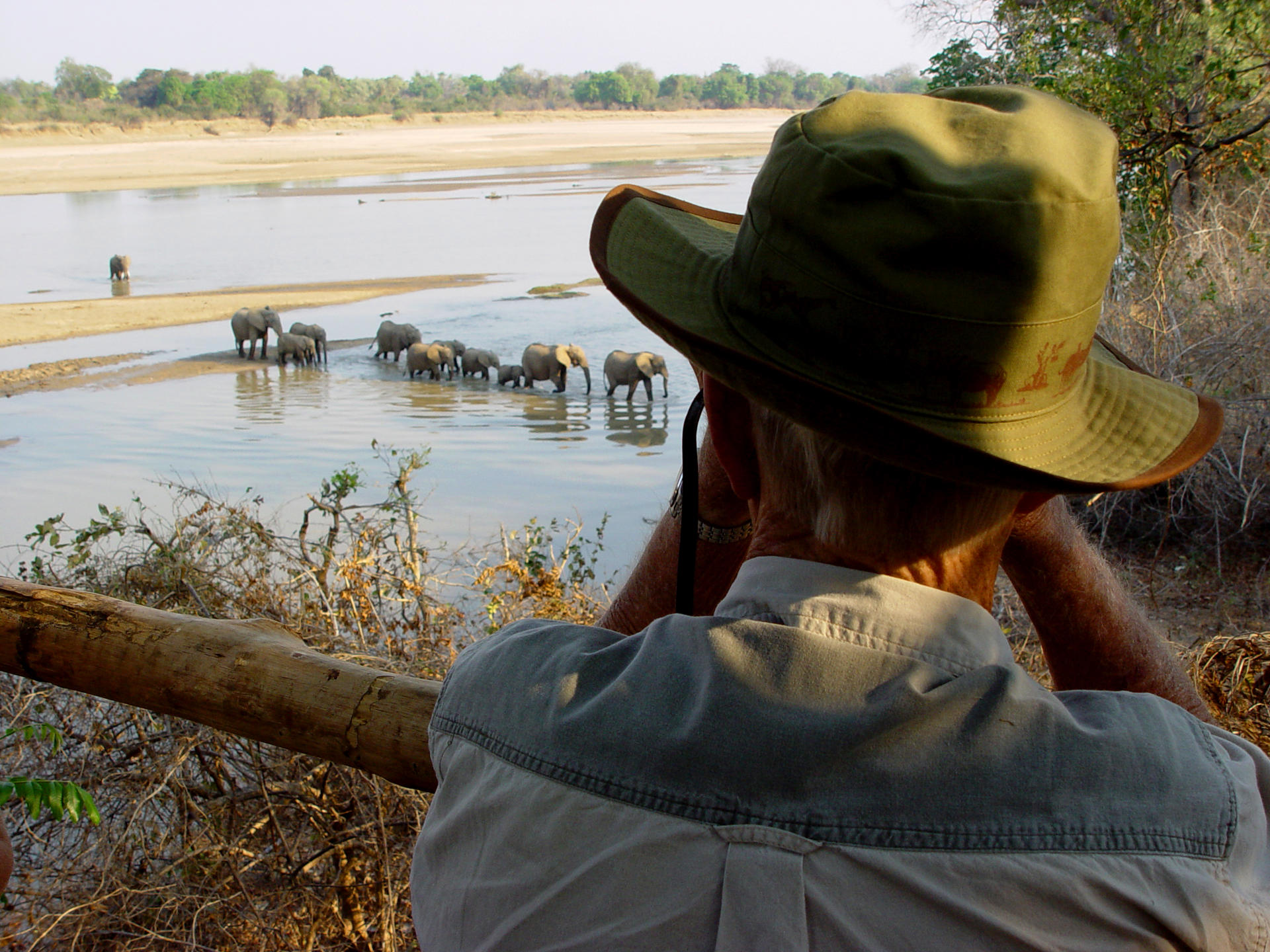 Day 8: End of Arrangements
Day 8: End of Arrangements
After breakfast, you will be transferred back to Mfuwe for your flight to Lusaka, marking the end of your unforgettable safari adventure.
Price Guide
Per person sharing: from £7,695 (based on mid season)
- This itinerary is available May to October.
- This trip starts and ends in Lusaka.
Includes
- All domestic flights, airstrip transfers and departure taxes
- Park & conservancy fees
- All game activities
- Full board accommodation with house drinks
International Flights Our partners can book international flights for you as required.
zambia GUIDE
You’ll find a short guide to Zambia below.
To start planning a trip to Zambia please contact us via the Enquiry Form, by email on info@realworldconservation.org.uk or on 01692 218189.
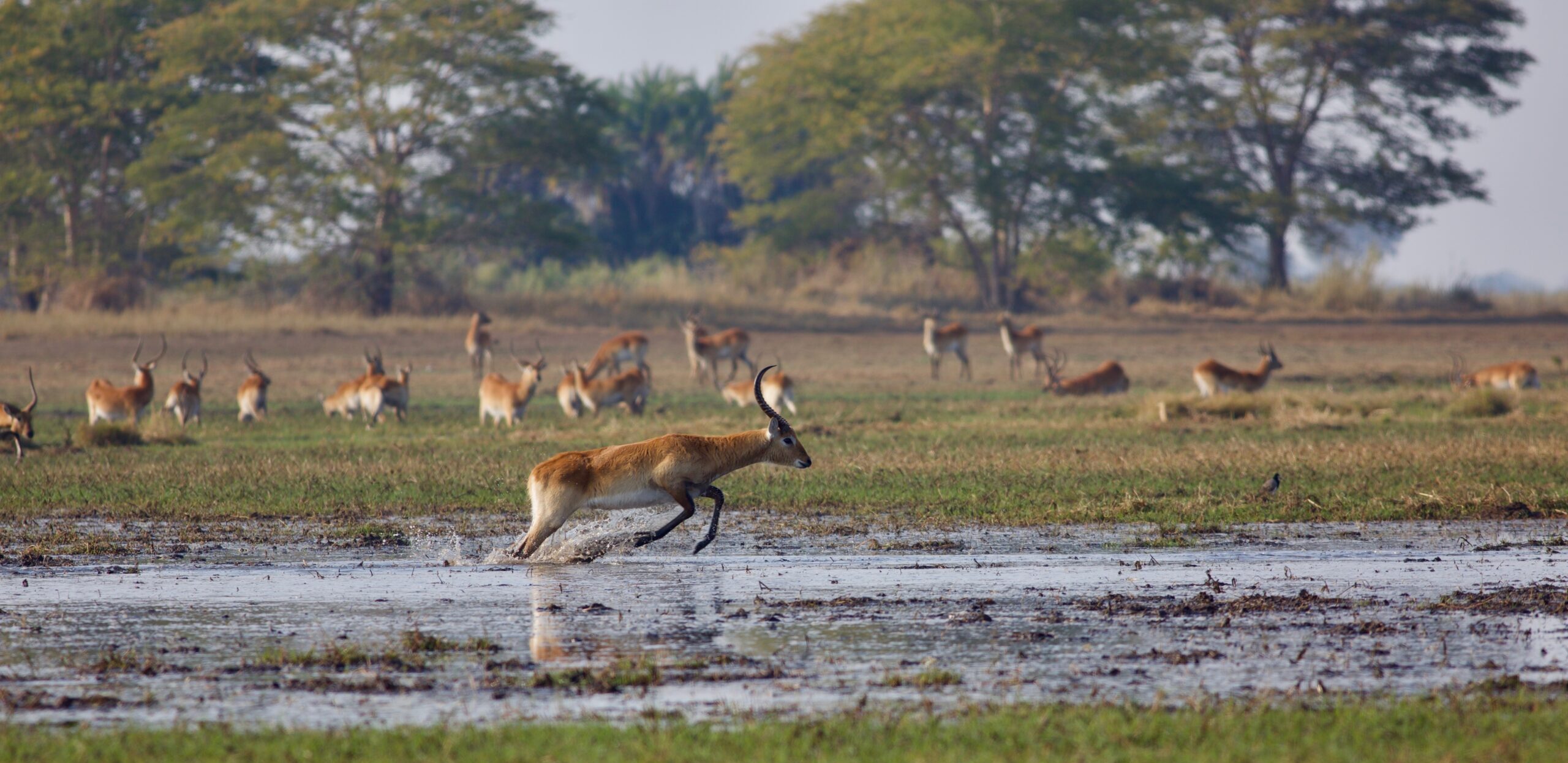
Kafue National Park, spanning an impressive 22,000 square kilometres, is Zambia’s oldest and largest national park. It offers a magical retreat for those seeking to venture off the beaten track. While it may not boast the same wildlife density as some other parks, its solitude and natural beauty make it a unique destination.
Kafue is at the forefront of conservation efforts in Zambia and has made significant strides in increasing its wildlife populations in recent years.
The Busanga Plains in the northwest is the park’s most renowned region—a plateau interspersed with channels fed by the Lufupa River. This area is teeming with Kafue’s most prolific wildlife, offering opportunities to see cheetah, lion, and wild dog.
There are a number of camps to choose from, with many of our clients favouring the location and immersive experience offered by Wilderness Camps (Busanga and Shumba) and the excellent Classic Zambia owner-run camps (Musekese and Ntemwa Busanga).
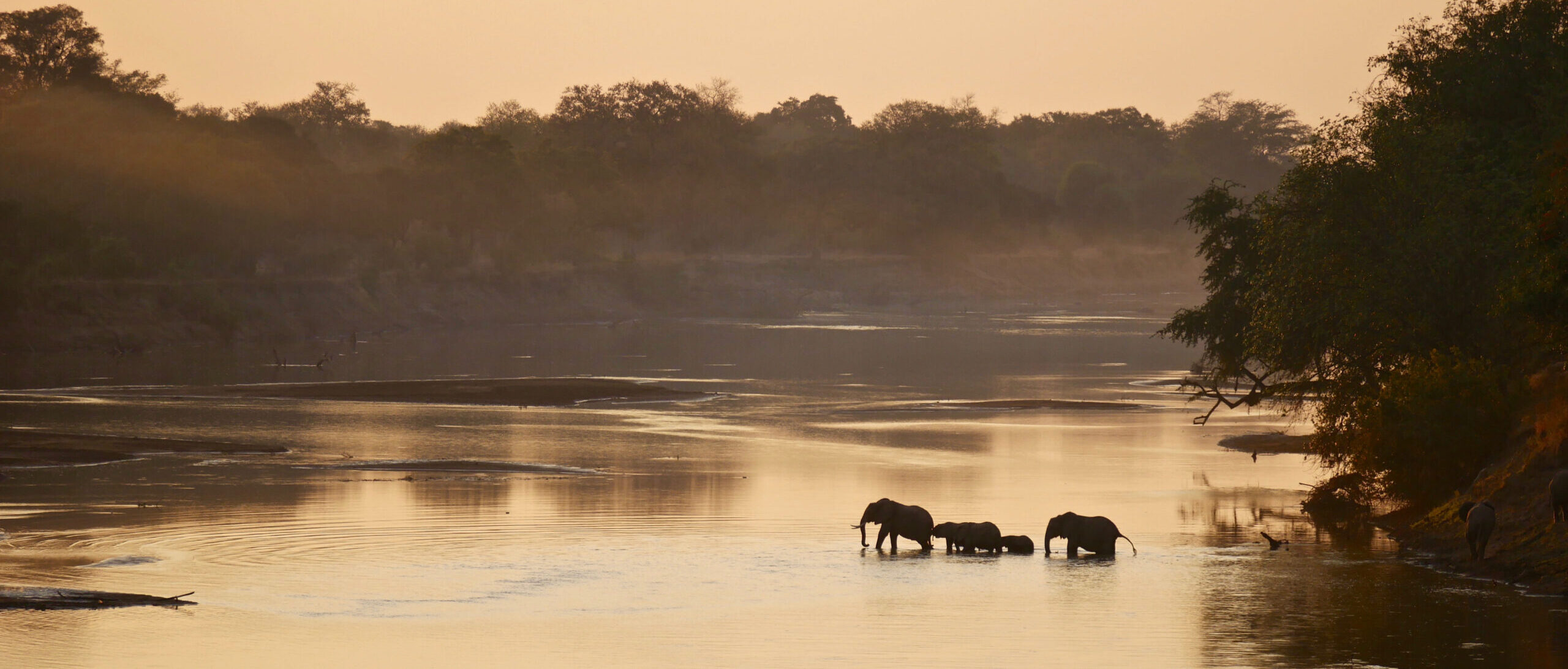
South Luangwa National Park
One of the world’s premier wildlife sanctuaries, South Luangwa National Park spans over 9,000 square kilometres and is bordered by the Rift Escarpment. The Luangwa River and its lagoons create one of the most concentrated wildlife regions in Africa, home to over 60 mammal species and 400 bird species. Visitors can enjoy 4×4 safaris by day and night, walking safaris, and hides. Wildlife highlights include lions, leopards, elephants, giraffes, zebras, wild dogs, jackals, and the dense population of hippos in the Luangwa River. Birdwatching is also superb, with species such as storks, egrets, herons, cranes, pelicans, and the spectacular carmine bee-eaters.
A highlight of any visit to South Luangwa is the pioneering walking safaris, allowing exploration of pristine wilderness on foot, accompanied by a qualified guide and tracker. The varied terrain, from dry savanna and river trails to woodland, offers plenty to explore and enjoy.
Most visitors enter through the main Mfuwe gate. While there are many lodges in this central area which is conveniently close to Mfuwe airport and offers very rewarding wildlife viewing, staying in camps deeper in the park offers a more exclusive experience.
North Luangwa National Park
North Luangwa National Park, less visited than its southern counterpart, offers a magical wilderness experience. Known for its successful black rhino reintroduction programme, the park focuses primarily on walking safaris. Camps in North Luangwa are few but exceptional, such as Mwaleshi Camp and Takwela Camp – each offering personalised experiences in remote settings. The park is home to a variety of wildlife, including lions, elephants, buffalo, and the Cookson’s wildebeest.
Best Time to Visit
The dry season runs from May to October, with November being the hottest time of year. The long rains break in November and last on and off until March. During the rains, many camps in Luangwa close, but notable exceptions remain open year-round and and offer very attractive Green Season rates. Most mobile camps and walking safaris only operate from May to October/November, aligning with the dry season.
Conservation
Explorers Against Extinction is deeply connected to this area, supporting various conservation projects including Conservation South Luangwa and the Zambia Carnivore Project. These initiatives are crucial for maintaining the rich biodiversity of the Luangwa Valley.
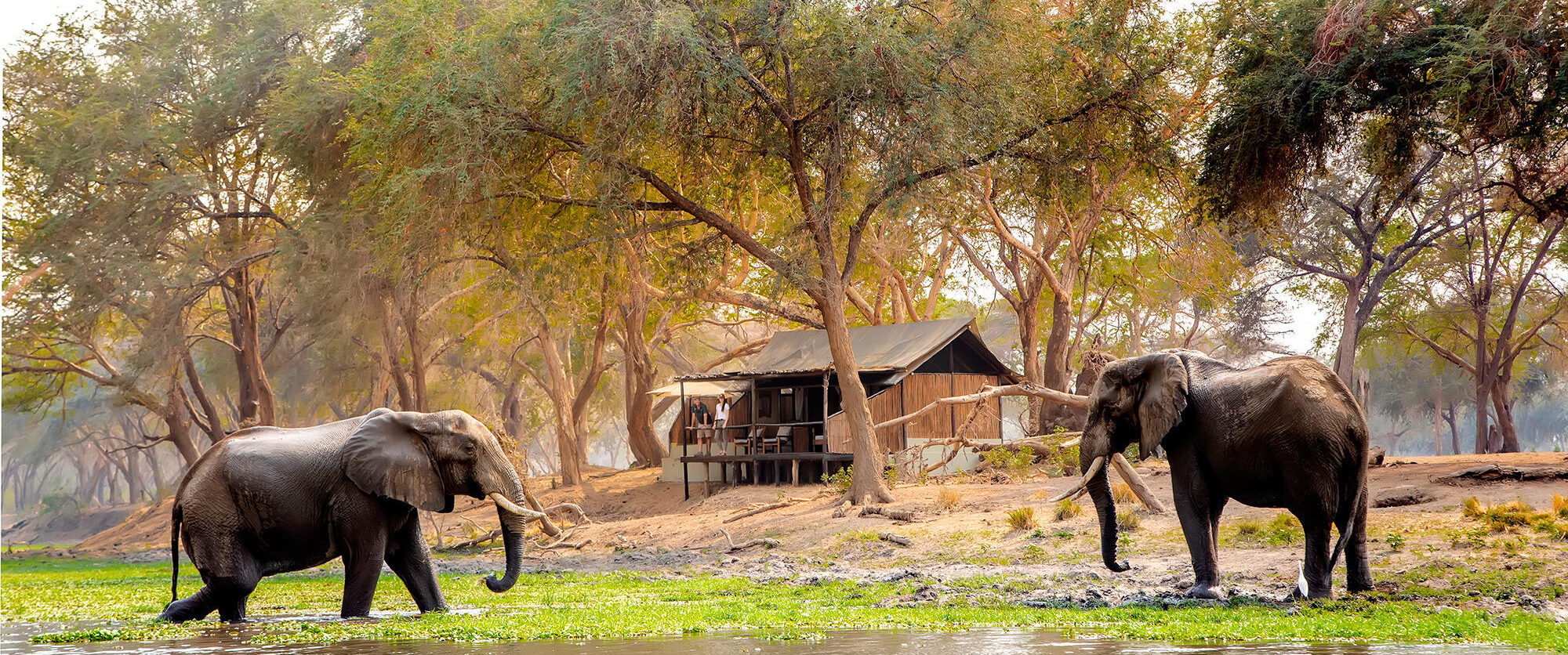
Lower Zambezi National Park, Zambia’s newest national park, spans an impressive 4,092 square kilometres and lies directly across the river from Zimbabwe’s Mana Pools National Park. This unique positioning means both banks of the Zambezi are protected, creating a vast wilderness area where animal and birdlife thrive in relative peace.
The park offers a variety of landscapes, from lush, overgrown riverbanks and flood plains to mopane forests. Set back from the river, the land rises into hills, and a large escarpment at the northern end acts as a natural barrier for the animals. This diversity in terrain supports a rich array of flora and fauna.
Wildlife and Activities
A key attraction of the Lower Zambezi is the opportunity to explore the Zambezi River itself by boat or canoe, allowing visitors to get close to the wildlife. The park is renowned for its large elephant herds, with groups of up to 100 individuals commonly seen. Lion, leopard, and buffalo are also relatively common. The park’s diverse habitats support a wide range of birdlife too, from fish eagles soaring overhead, to crested guinea fowl, Narina Trogon, and Lilian’s lovebird.
Fishing is another popular activity in the park, with species such as Tiger Fish, Bream, and the large vundu catfish. Canoeing offers peaceful access to many of the waterways and backwaters, providing a unique way to experience the park’s beauty and wildlife.
Best Time to Visit
The best time to visit Lower Zambezi National Park is between June and October, although some lodges are open from May to November. For fishing enthusiasts, September and October are particularly recommended.
Conservation
Lower Zambezi National Park plays a crucial role in conservation, providing a protected area for wildlife to thrive. Explorers Against Extinction partners with Conservation Lower Zambezi to support these efforts.
Ol Mondoro Camp
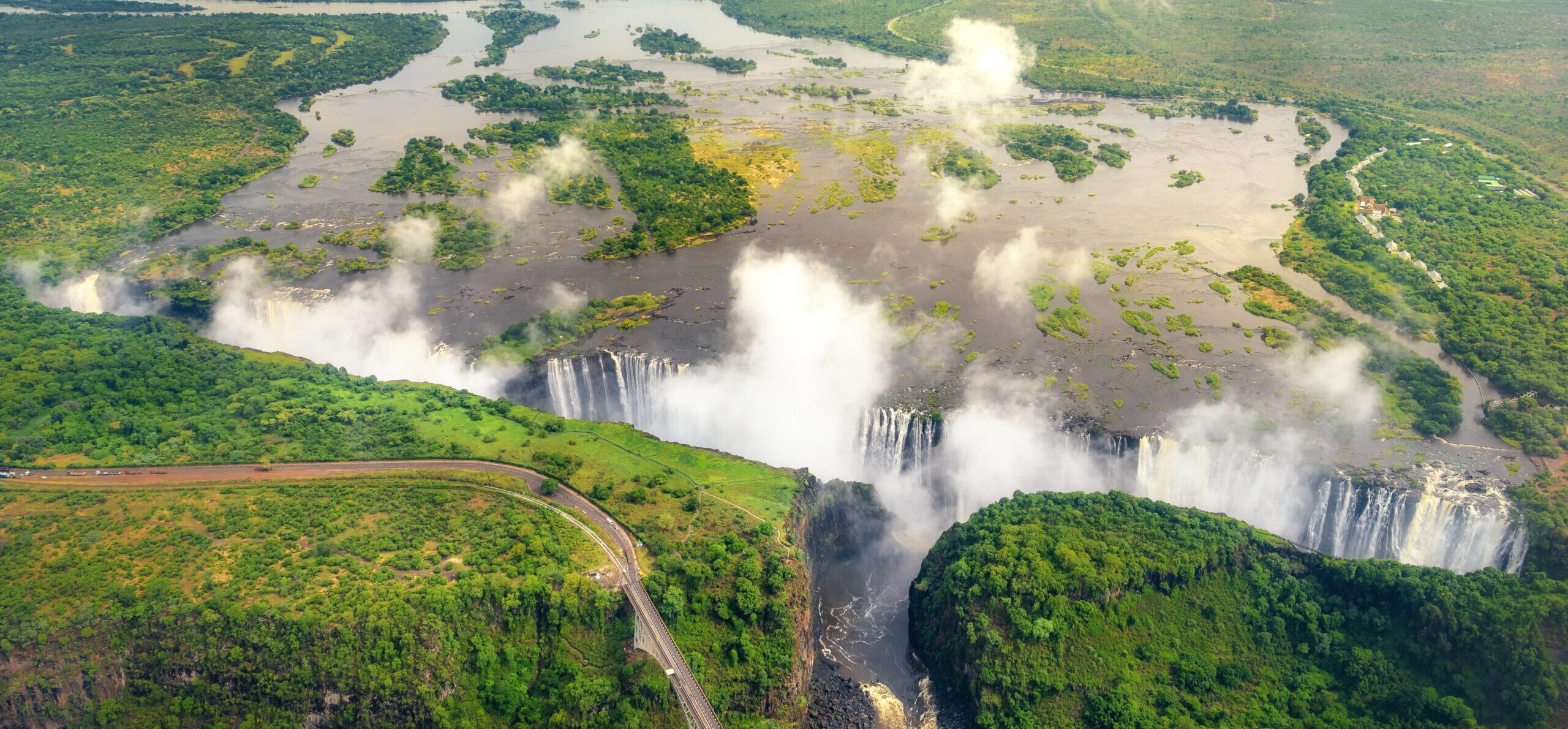
Victoria Falls, known locally as ‘Mosi-oa-Tunya’ or ‘The Smoke That Thunders’, is one of the most impressive waterfalls in the world, shared by Zimbabwe and Zambia.
Staying on the Zambian side arguably offers a more tranquil experience and an appealing 3-4 night safari extension with beautiful river lodges side-stepping the hustle and bustle of Victoria Falls town on the Zimbabwean side
Victoria Falls and Livingstone
Victoria Falls spans approximately 1,708 meters wide and plunges 108 meters at its deepest point. The Zambezi River creates a series of eight basalt gorges, producing a spectacular natural wonder. The Zambian side provides up-close experiences of the eastern cataract and activities such as walking across Knife-Edge Bridge and visiting Livingstone Island and Devil’s Pool, which offer thrilling vantage points right on the edge of the falls.
Livingstone, the gateway to the Zambian side of Victoria Falls, offers a range of charming river lodges positioned upstream of the falls. These lodges provide serene settings along the river and easy access to the falls and the various adventure activities available in the Upper Zambezi.
Notable lodges include Waterberry Lodge, Tongabezi Lodge, Thorntree River Lodge, and Twinsalo Siankaba.
Activities
Activities include:
- Walking Tours: Explore the falls up close with guided walking tours along the edge.
- Boat Cruises: Enjoy sunset cruises on the Zambezi River, often including wildlife sightings.
- Adventure Sports: Engage in thrilling activities such as white-water rafting, bungee jumping, and the ‘Flight of Angels’ helicopter flight.
- Fishing: The Upper Zambezi is renowned for its excellent fishing opportunities, particularly for Tiger Fish.
Seasonal Considerations
- March to May: The falls are at their fullest, creating spectacular spray and the chance to witness the lunar rainbow, a rare phenomenon where moonlight creates a night-time rainbow in the mist.
- June to September: Ideal for viewing the falls with moderate water levels. This period provides the best balance between visibility and water flow.
- October to November: The falls are at their lowest, especially on the Zambian side, often reducing to a trickle by November, revealing the impressive geological formations of the gorge.
Combination with Safari
A visit to Livingstone pairs wonderfully with safaris in South Luangwa, Lower Zambezi, or other parks in Zambia. It also complements a broader southern Africa trip with good connections to Johannesburg and Cape Town in South Africa, for example.
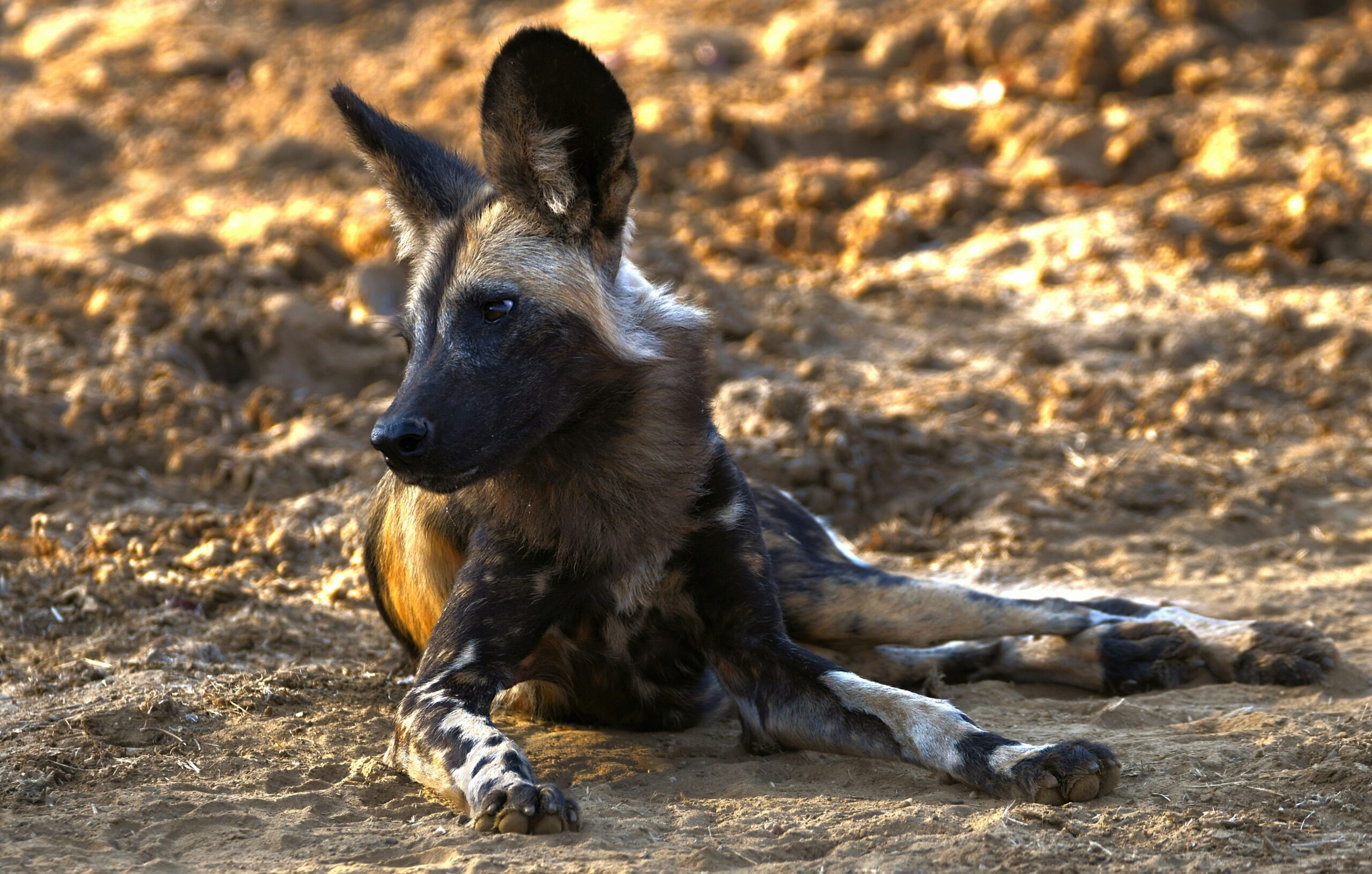 Liuwa Plains National Park, located in the remote western part of Zambia near the Angolan border, is renowned for its extraordinary wildlife and pristine landscapes. The park is best known for the annual wildebeest migration, the second-largest in Africa, where tens of thousands of wildebeest traverse the plains, typically peaking from October to November.
Liuwa Plains National Park, located in the remote western part of Zambia near the Angolan border, is renowned for its extraordinary wildlife and pristine landscapes. The park is best known for the annual wildebeest migration, the second-largest in Africa, where tens of thousands of wildebeest traverse the plains, typically peaking from October to November.
Managed by African Parks since 2003, significant efforts have been made to restore the ecosystem, reintroduce wildlife, and enhance conservation measures. Thanks to these efforts, Liuwa Plains now boasts a diverse array of wildlife. Visitors can expect to see large populations of wildebeest, zebra, and red lechwe. Predators such as hyenas, cheetahs, and lions also thrive in the park, alongside occasional sightings of leopards. African wild dogs were reintroduced in 2021/22. Additionally, Liuwa Plains is home to less commonly seen species like the oribi and the roan antelope.
The dry season, which extends from May to November, is the best time for wildlife viewing, with October and November offering the peak of the wildebeest migration. The park’s isolation and conservation efforts by African Parks ensure a wild and unspoiled safari experience, making it an ideal destination for adventurous travelers seeking a unique and immersive experience in nature.
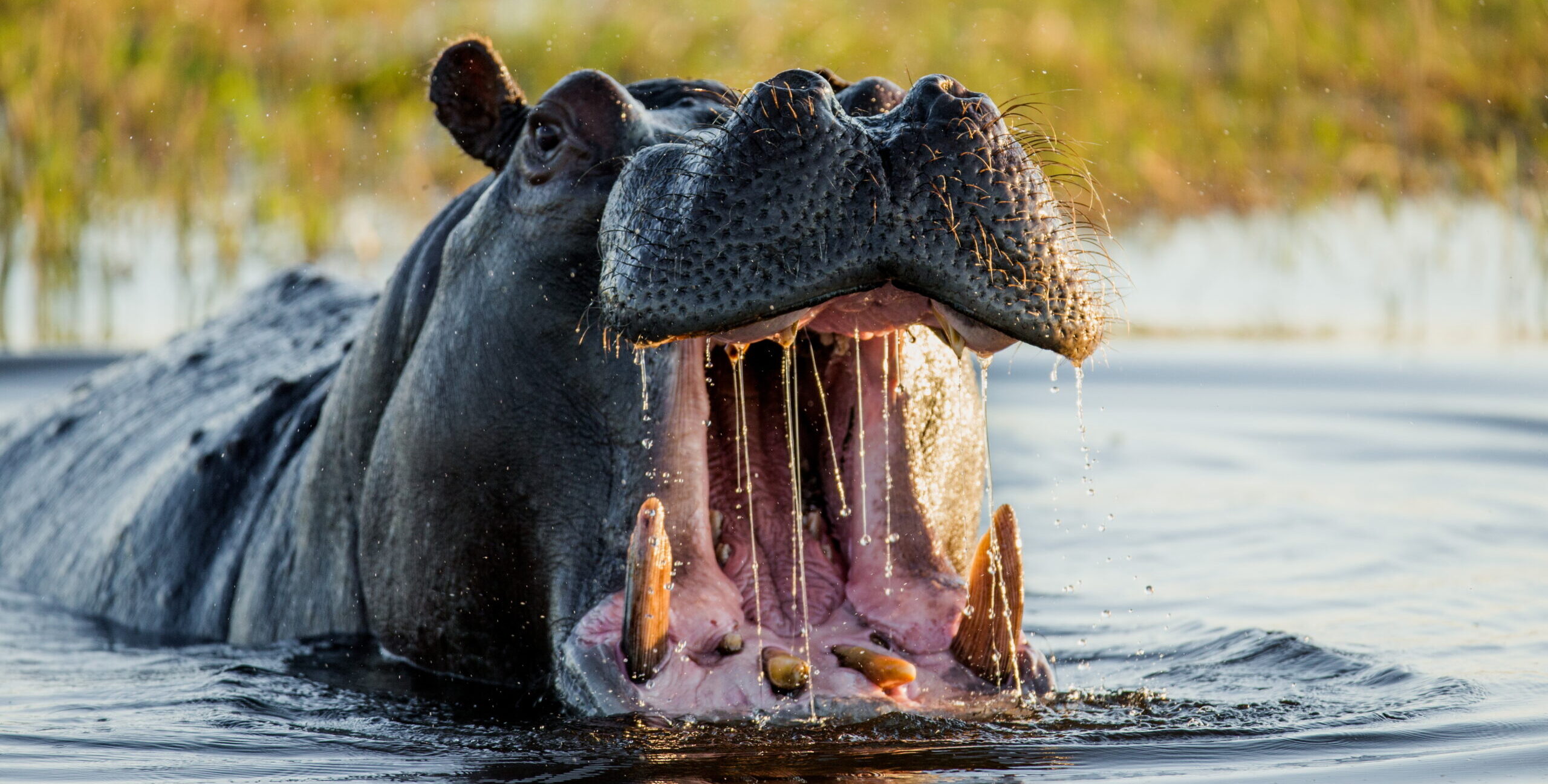
The best time to visit Zambia varies depending on the activities you wish to experience and the specific regions you plan to explore.
Wet or ‘Green’ Season (November-March)
The wet season, also known as the “green” season, spans from November to March. During this period, the landscape becomes lush and verdant, and birdlife is particularly abundant. This is an excellent time for birdwatching, as many migratory species are present. Game viewing is still possible, primarily by 4×4 vehicles and boats. However, seasonal bush camps close due to the heavy rains. January is typically the wettest month, and daily high temperatures average around 26 degrees Celsius (79 degrees Fahrenheit).
Dry Season (May-October)
The dry winter months from May to October offer the best wildlife viewing opportunities. As the water sources dwindle, animals congregate around the remaining waterholes and rivers, making it easier to spot them. Walking safaris are particularly popular during the dry, cool winter period.
- May-July: Temperatures are cooler, with daily highs around 23 degrees Celsius (73 degrees Fahrenheit) in July, which is the coolest month. This is an ideal time for comfortable safari experiences.
- August-October: Temperatures start to rise, reaching up to 31 degrees Celsius (88 degrees Fahrenheit) in October, the hottest month. Despite the heat, wildlife concentrations are at their peak, and this is a superb time to visit Victoria Falls, as the water levels begin to recede, offering spectacular views and the possibility of visiting Devil’s Pool on the Zambian side.
Each season has its unique advantages, so the best time to visit Zambia ultimately depends on your personal interests and the type of safari experience you are seeking.
OUR PROJECT PARTNERSHIPS IN ZAMBIA
Images: Mupamadzi River, South Luangwa, RPS (at top); Chikoko Tree (top left); Kutali Camp (top right); Tongabezi (bottom left); Kaingo (bottom left).



